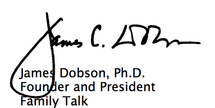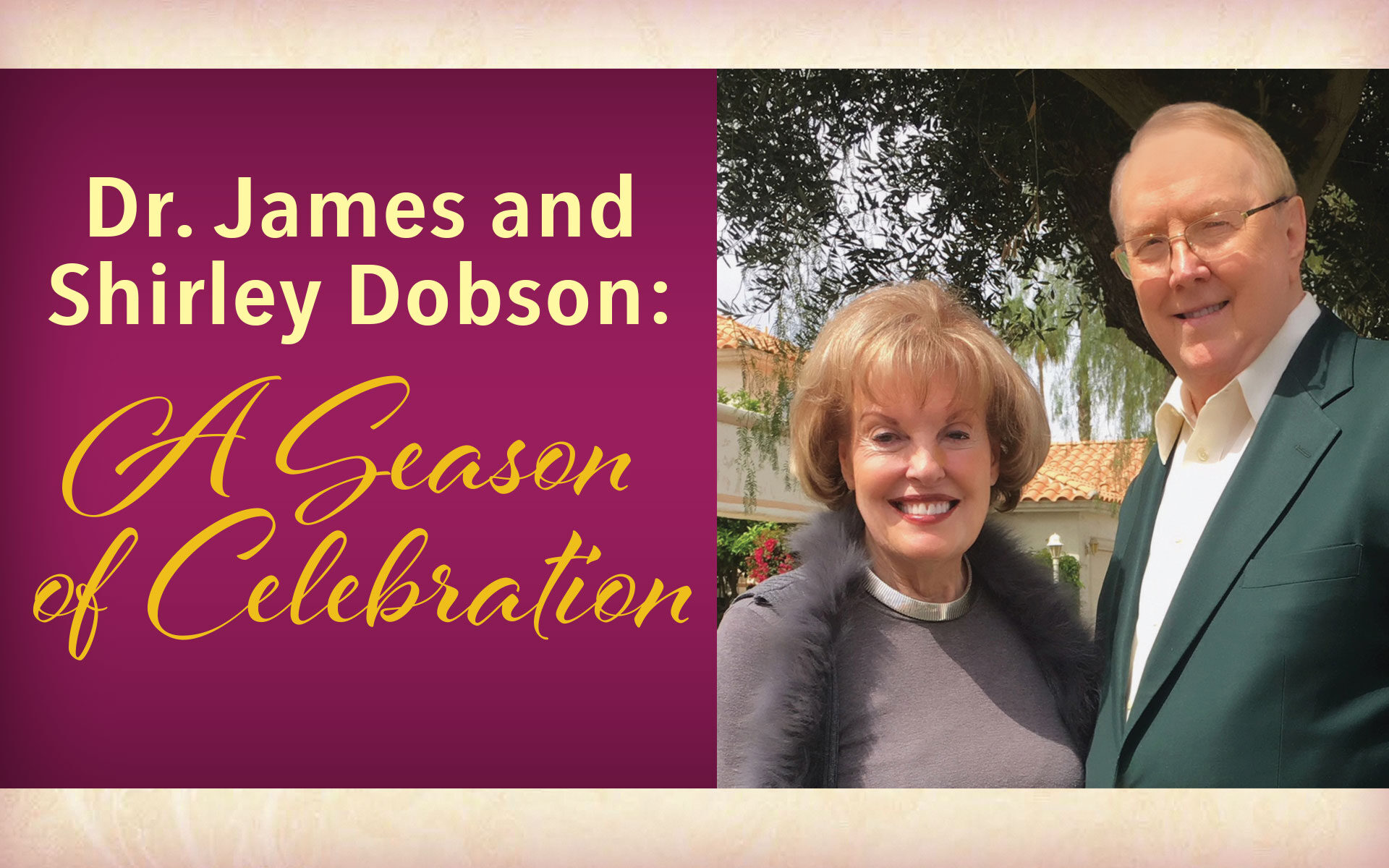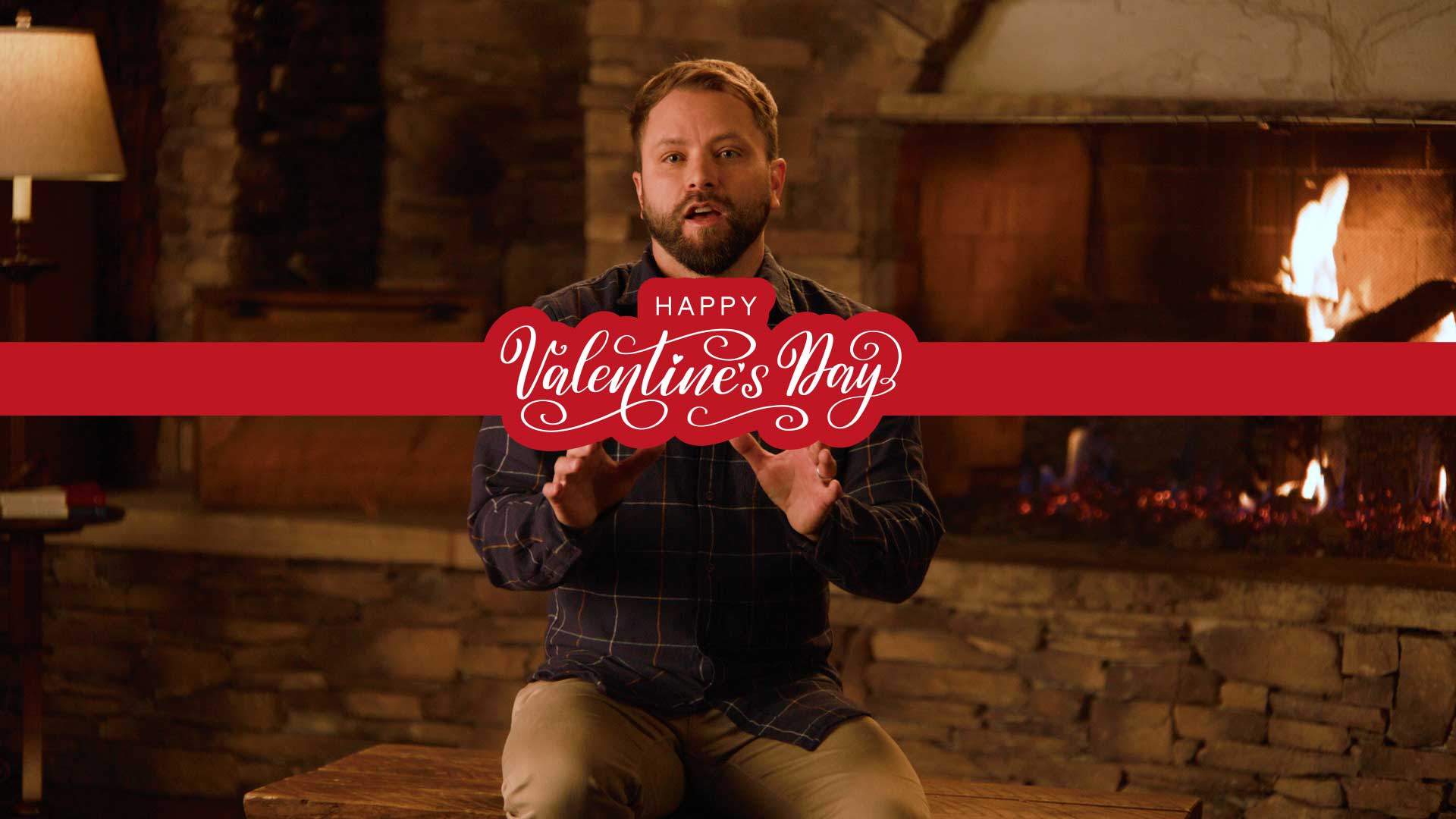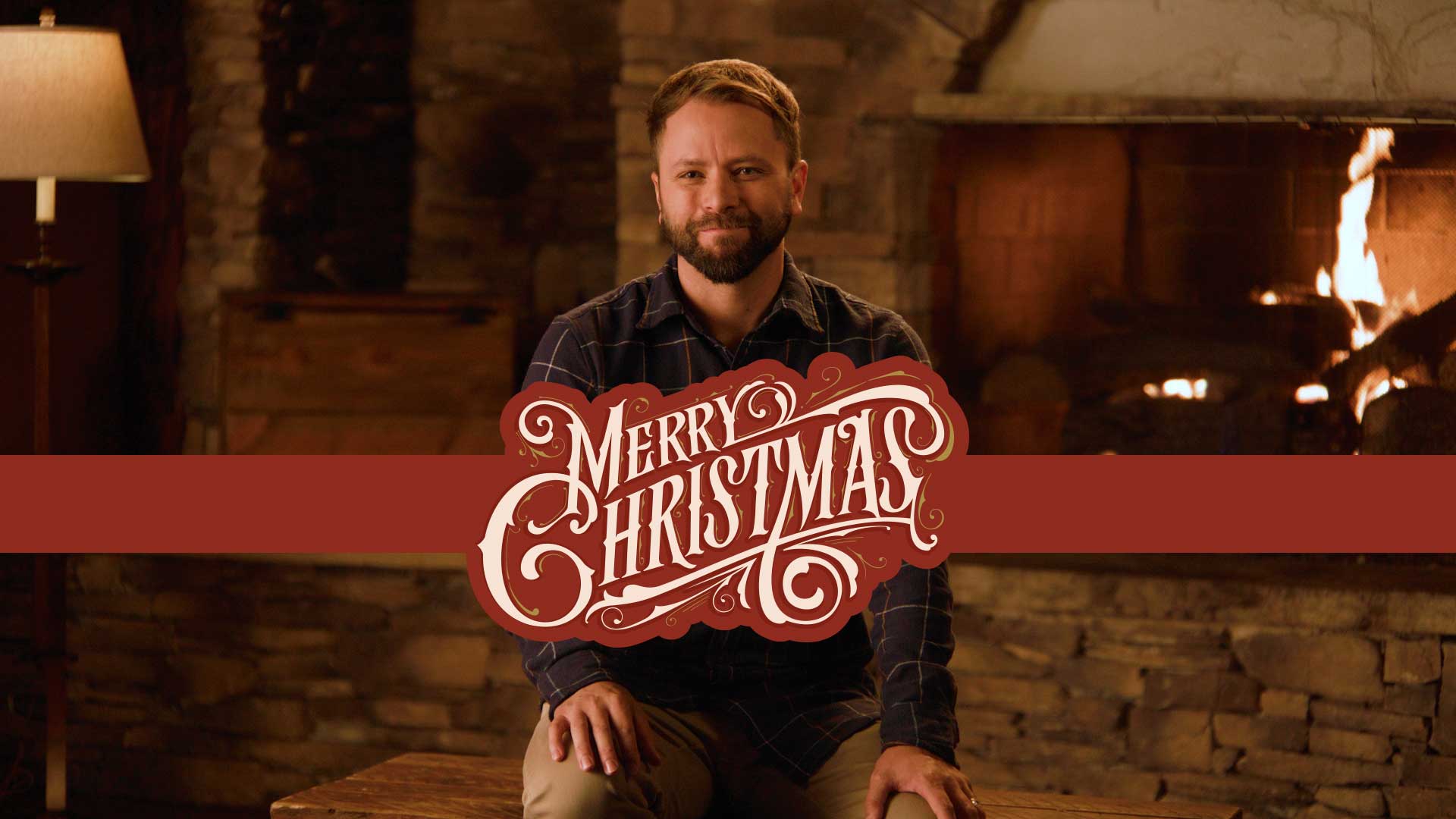
Dear Friends,
A warm Christmas greeting to you! If your family is anything like ours, you would probably enjoy taking time out during this busy season of the year to make some hot cocoa and popcorn, throw a log on the fire and watch a movie that has become synonymous with the Christmas season. I’m talking about Frank Capra’s 1946 classic starring Jimmy Stewart, and titled, It’s a Wonderful Life. If you’re one of the few people who hasn’t seen this enduring American favorite, I would encourage you to do so.
The movie isn’t flawless, of course. Critics at the time of its release argued that it was "too sentimental," and Christian viewers have questioned its dubious theology. Scripture gives no indication that angels must "earn their wings," for example, and worship of the Christ Child will need to occur on other occasions than just during Christmas. However, the film is noteworthy for its depiction of a time when life was simpler, and when matters of faith, friendship, and family were paramount.
I’m convinced that one of the reasons It’s a Wonderful Life has retained such an faithful following is that it gives viewers a tantalizing glimpse of values and beliefs that have been all but lost today. And, clumsy angels aside, I believe that it also teaches us some very important spiritual lessons about the love of God and the inestimable worth of every human being.
The star of It’s a Wonderful Life was a man who himself could be considered an American classic: Jimmy Stewart. Although he passed away in 1997, his legacy lives on in a number of beloved movies, of which It's a Wonderful Life is only one example. Mr. Stewart was a man of deep Christian faith whose beliefs stood in sharp contrast to those of many of his contemporaries. He put his burgeoning film career on hold to fight for his country in World War II. He flew 20 combat missions with the U.S. Air Force and earned six battle stars during the course of that conflict. After being released from active duty, he continued as a reserve officer and became a general.
Stewart commented that one of his greatest sources of encouragement in battle was a tattered copy of the 91st Psalm that had been given to him by his father(i). In addition to his service in the military, Stewart was married to the same woman, Gloria, for more than 45 years (until she passed away in 1994), and he faithfully attended church until the day he died. Clearly, his values differed greatly from many of today’s Hollywood elite!
A few years ago before his death, Stewart was asked to offer his thoughts on It's a Wonderful Life in an article for Guideposts Magazine(ii). I would like to share his comments with you in this month’s letter. I hope that you’ll find them encouraging and refreshing as you and your loved ones make preparations for your own Christmas celebration
IT REALLY IS A WONDERFUL LIFE
BY JIMMY STEWART
A friend told me recently that seeing a movie I made over 40 years ago is a holiday tradition in his family "like putting up the Christmas tree." That movie is It's a Wonderful Life, and out of all the 80 films I’ve made, it’s my favorite. But it has an odd history.
When the war was over in 1945, I came back home to California from three years’ service in the Air Force. I had been away from the film business, my MGM contract had run out, and frankly, not knowing how to get started again, I was just a little bit scared. Hank Fonda was in the same boat, and we sort of wandered around together, talking, flying kites and stuff. But nothing much was happening. Then one day Frank Capra phoned me. The great director had also been away in service, making the Why We Fight documentary series for the military, and he admitted to being a little frightened too. But he had a movie in mind, so we met to talk about it.
He said the idea came from a Christmas story written by Philip Van Doren Stern. Stern couldn’t sell the story anywhere, but he finally had 200 twenty-four-page pamphlets printed up at his own expense, and he gave them to his friends as a greeting card.
"Now listen," Frank began hesitantly. He seemed a little embarrassed about what he was going to say. "The story starts in heaven, and it’s sort of the Lord telling somebody to go down to earth because there’s a fellow who’s in trouble, and this heavenly being goes to a small town, and . . ."
Frank swallowed and took a deep breath. "Well, what it boils down to is, this fella who thinks he’s a failure in life jumps off a bridge. The Lord sends down an angel named Clarence, who hasn’t earned his wings yet, and Clarence jumps into the water to save the guy. But the angel can’t swim, so the guy has to save him, and then . . ."
Frank stopped and took a deep breath. "This doesn’t tell very well, does it?"
I jumped up. "Frank, if you want to do a picture about a guy who jumps off a bridge and an angel named Clarence who hasn’t won his wings yet coming down to save him, well, I’m your man!"
Production of It's a Wonderful Life started April 15, 1946, and from the beginning there was a certain something special about the film. Even the set was special. Two months had been spent creating the town of Bedford Falls, New York. For the winter scenes, the special-effects department invented a new kind of realistic snow instead of using the traditional white cornflakes. As one of the longest American movie sets ever made until then, Bedford Falls had 75 stores and buildings on four acres with a three-block main street lined with 20 full-grown oak trees.
As I walked down that shady street the morning we started work, it reminded me of my hometown, Indiana, Pennsylvania. I almost expected to hear the bells of the Presbyterian Church, where Mother played the organ and Dad sang in the choir. I chuckled, remembering how the fire siren would go off, and Dad, a volunteer fireman, would slip out of the choir loft. If it was a false alarm, Dad would sneak back and sort of give a nod to everyone to assure them that none of their houses was in danger.
I remembered how, after I got started in pictures, Dad, who’d come to California for a visit, asked, "Where do you go to church around here?"
"Well, " I stammered, "I haven’t been going—there’s none around here."
Dad disappeared and came back with four men. "You must not have looked very hard, Jim," he said, "because there’s a Presbyterian Church just three blocks from here, and these are the elders. They’re building a new building now, and I told them you were a movie star and you would help them." And so Brentwood Presbyterian was the first church I belonged to out here. Later that church was the one in which Gloria and I were married. A few years after that it was the same church I’d slip into during the day when Gloria was near death after our twin girls were born. Then, after we moved, we attended Beverly Hills Presbyterian, a church we could walk to.
It wasn’t the elaborate movie set, however, that made It's a Wonderful Life so different; much of it was the story.
The character I played was George Bailey, an ordinary kind of fella who thinks he’s never accomplished anything in life. His dreams of becoming a famous architect and of living adventurously have not been fulfilled.
Instead he feels trapped in a humdrum job in a small town. And when faced with a crisis in which he feels he has failed everyone, he breaks under the strain and flees to the bridge. That’s when his guardian angel, Clarence, comes down on Christmas Eve to show him what his community would be like without him. The angel takes him back through his life to show how our ordinary everyday efforts are really big achievements. Clarence reveals how George Bailey’s loyalty to his job at the building-and-loan office has saved families and homes, how his little kindnesses have changed the lives of others, and how the ripples of his love will spread through the world, helping make it a better place.
Good as the script was, there was still something else about the movie that made it different. It’s hard to explain. I, for one, had things happen to me during the filming that never happened in any other picture I’ve made.
In one scene, for example, George Bailey is faced with unjust criminal charges and, not knowing where to turn, ends up in a little roadside restaurant. He is unaware that most of the people in town are arduously praying for him. In this scene, at the lowest point in George Bailey’s life, Frank Capra was shooting a long shot of me slumped in despair. In agony I raised my eyes and, following the script, and pled, "God . . . God . . . Dear Father in heaven, I’m not a praying man, but if You’re up there and You can hear me, show me the way. I’m at the end of my rope. Show me the way, God . . ."
As I said those words, I felt the loneliness, the hopelessness of people who had nowhere to turn, and my eyes filled with tears. I broke down sobbing. This was not planned at all, but the power of that prayer, the realization that our Father in heaven is there to help the hopeless, had reduced me to tears.
Frank, who loved spontaneity in his films, was ecstatic. He wanted a close-up of me saying that prayer, but was sensitive enough to know that my breaking down was real and that repeating it in another take was unlikely. But Frank got his close-up anyway.
The following week he worked long hours in the film laboratory, again and again enlarging the frames of that scene so that eventually it would appear as a close-up on the screen. I believe nothing like this had ever been done before. It involved thousands of individual enlargements with extra time and money. But he felt it was worth it.
There was a growing excitement among all of us as we strove day and night through the early summer of 1946. We threw everything we had into our work. Finally, after three months, shooting some 68 miles of 35-millimeter film we completed the filming and had a big wrap-up party for everyone. It was an outdoor picnic with three-legged races and burlap-bag sprints, just like the picnics back home.
Frank talked enthusiastically about the picture. He felt that the film as well as the actors would be up for Academy Awards. Both of us wanted it to win, not only because we believed in its message, but also for the reassurance we needed in this time of starting over.
But life doesn’t always work out the way we want it to. The movie came out in December 1946, and from the beginning we could tell it was not going to be the success we’d hoped for. The critics had mixed reactions. Some liked it ("a human drama of essential truth"); others felt it "too sentimental . . . a figment of simple Pollyanna platitudes."
As more reviews came out, our hopes sank lower and lower. During early February 1947, eight other current films including Sinbad the Sailor and Betty Grable’s The Shocking Miss Pilgrim, outranked it in box-office income. The postwar public seemed to prefer lighthearted fare. At the end of 1947, It's a Wonderful Life ranked 27th in earnings among the releases that season.
And although it earned several Oscar nominations, despite our high hopes, it won nothing. "Best Picture for 1946" went to The Best Years of Our Lives. By the end of 1947, the film was quietly put on the shelf.
But a curious thing happened. The movie simply refused to stay on the shelf. Those who loved it loved it a lot, and they must have told others. They wouldn’t let it die any more than the angel Clarence would let George Bailey die. When it began to be shown on television, a whole new audience fell in love with it.Today, after some 40 years, I’ve heard the film called "an American cultural phenomenon." Well, maybe so, but it seems to me there is nothing phenomenal about the movie itself. It’s simply about an ordinary man who discovers that living each ordinary day honorably, with faith in God and a selfless concern for others, can make for a truly wonderful life.
As I read Stewart’s words today, I can hear his homey, midwestern drawl as he shares his conclusions about It's a Wonderful Life. He suggested that true satisfaction in living comes from "faith in God and selfless concern for others." Knowing of his deep Christian commitment, I wish Stewart had said a little more. He could have told a pagan world about a baby who was born to a virgin in a humble stable, more than 2000 years ago. He was laid in a manger among the domesticated animals, but this was no ordinary child. His name was Jesus, and He had come from His heavenly Father to live a sinless life and become a sacrificial Lamb to save the people—all of us—from our sins. Jesus was condemned to die by a rigged Roman court, and was crucified on a cruel cross. He was laid in a tomb where He remained there until the third day when He was resurrected on a bright and glorious morning. Now He lives to save anyone who believes in Him and repents of his or her sins. To them, this Savior offers eternal life and joy unspeakable in heavenly splendor.
In that one paragraph, I have shared with you the greatest story ever told. I guess it’s unrealistic to have expected a Hollywood movie to tell it, although it happened about 50 years later in Mel Gibson’s powerful film, The Passion of the Christ. This is the reason for the season we celebrate today. We call it Christmas, and it is the most blessed day of the year.
How will you celebrate the birth of the Christ Child? May I tell you about a memory from my childhood? When I was four years old, my extended family came together for a Christmas celebration in Shreveport, Louisiana, the place of my birth. I remember that evening as though it was yesterday. My father took primitive 8 mm, black and white movies of all my cousins around the tree. That film still exists today. You can tell that the night fairly crackled with excitement. There on the screen are my parents, my uncles and aunts, and all the happy children. Also shown is the matriarch of the family. We called her “Little Mother.” She weighed only 97 pounds. Even then she was wrinkled and stooped, everybody loved her. The rest of us looked so young and so happy.
I’m sad to say that every one of the adults who was there on that Christmas Eve has gone on to heaven. Little Mother died six years later after a sudden heart attack. Now the cousins are passing, one by one. Only three remain. The good news is that I have reason to believe that each of these precious loved ones knew Jesus Christ as their personal Lord and Savior. I will see them again on that Glorious Good Morning when we meet on the other side. My mother and father await us there, as does Little Mother. She is no longer stooped and wrinkled. She is young and vibrant today. The trials of this life, with its sicknesses and disappointments, are not the end for your family and mine. Because of the birth, death, and resurrection of our Savior, we will live again!
In fact, this is the best time to announce that we are planning a grand reunion on the other side. And . . . you are invited. We will meet just inside the Eastern Gate, and as in days of old, the atmosphere will rustle with excitement. The Guest of Honor on that morning will be wearing a seamless linen robe and a crown on His head.
We will all kneel at His feet and thank Him for the promise of eternal life, which is fulfilled at last. Then I want to hear Him say, “Well done, thou good and faithful servant. Come and enter the Kingdom prepared for you since the foundation of the world.” (Matthew 25:21, 23, 34)
Then we will hear a great voice echoing across heaven, saying:
“Now the dwelling place of God is with men, and He will live with them. They will be His people, and God Himself will be with them and be their God. He will wipe every tear from their eyes. There will be no more death or crying or pain, for the old order of things has passed away.” (Revelation 21:3-4)
Before closing, I would like to say a word of heartfelt thanks to those of you who have faithfully supported us with your finances and, even more importantly, your prayers over the past year. We are truly thankful for your involvement in the mission to which the Lord has called us. I’m aware that the Christmas season often brings additional financial challenges to many of you. However, if, after supporting your local church, you find that you have a little "extra" left over that you might want to consider investing in our outreach, we would love to hear from you. Rest assured that your gift will be carefully applied to the ongoing work of ministering to individuals and families in Jesus’ name.
Merry Christmas!
Sincerely,

**Gift Doubled through December with the matching grant!
(i) http://theaquilareport.com/jimmy-stewart-fdr-and-psalm-91/
(ii) https://www.guideposts.org/positive-living/it-really-is-a-wonderful-life?nopaging=1
This letter may be reproduced without change and in its entirety for non-commercial and non-political purposes without prior permission from Family Talk. Copyright, 2015 Family Talk. All Rights Reserved. International Copyright Secured. Printed in the U.S.A.








